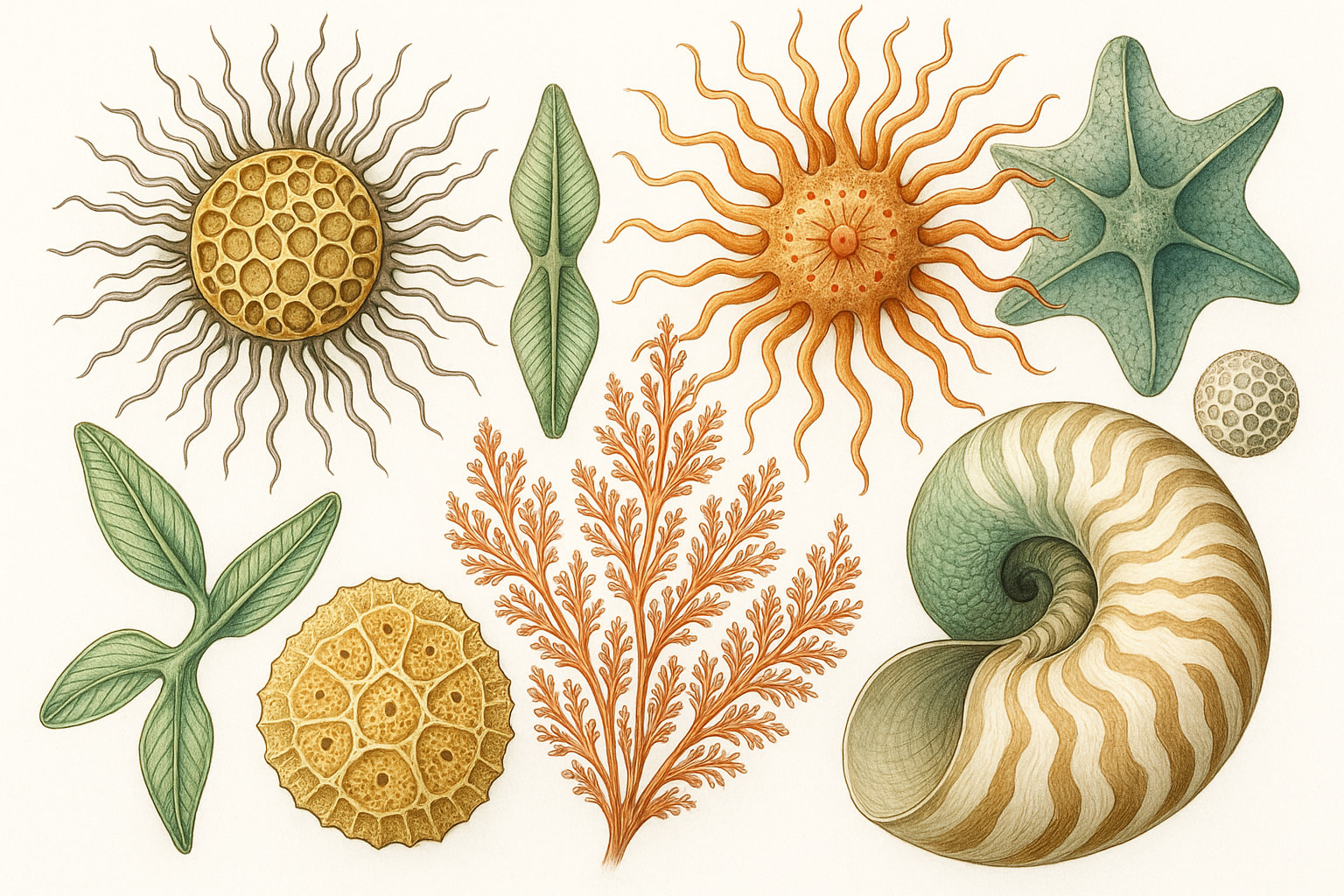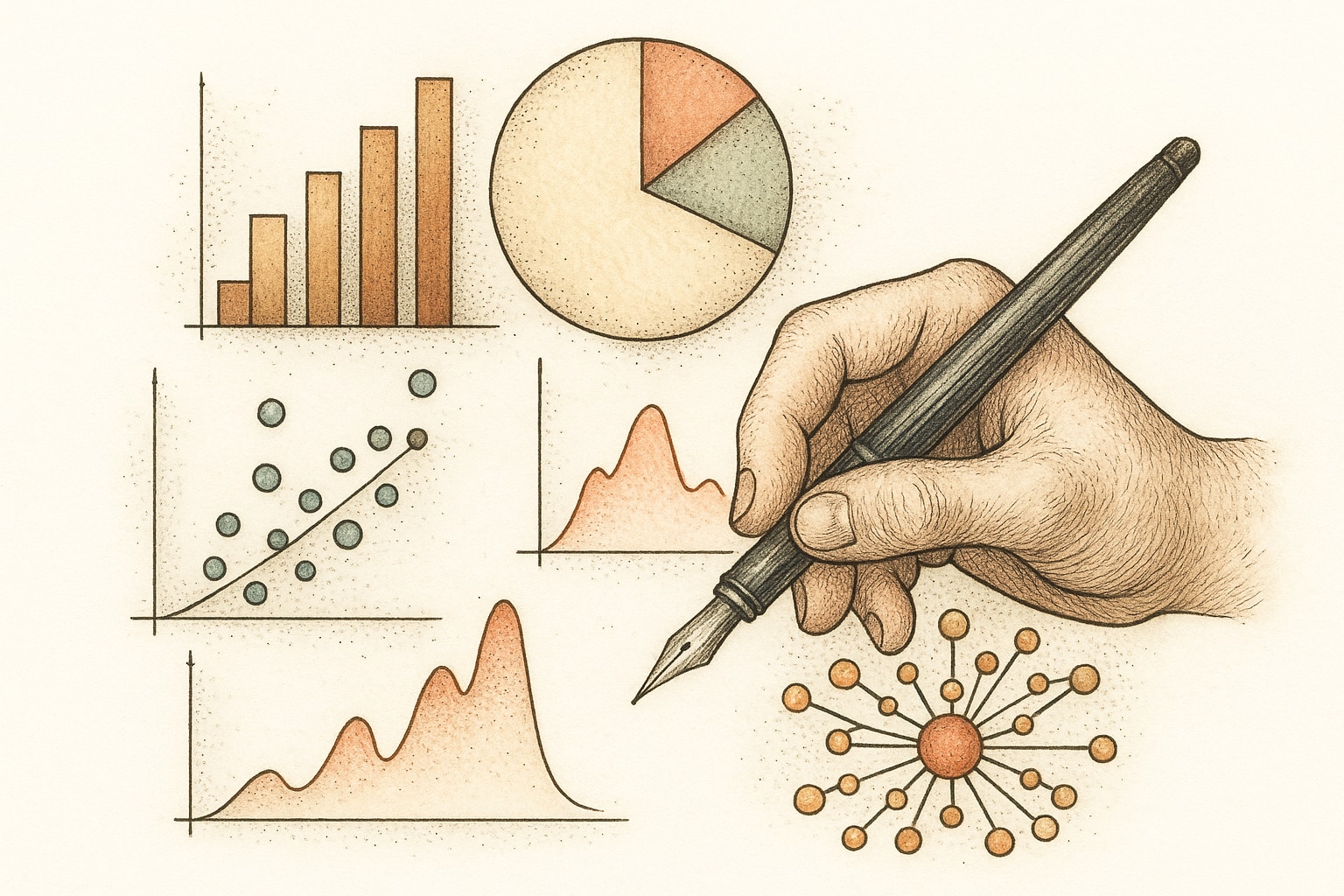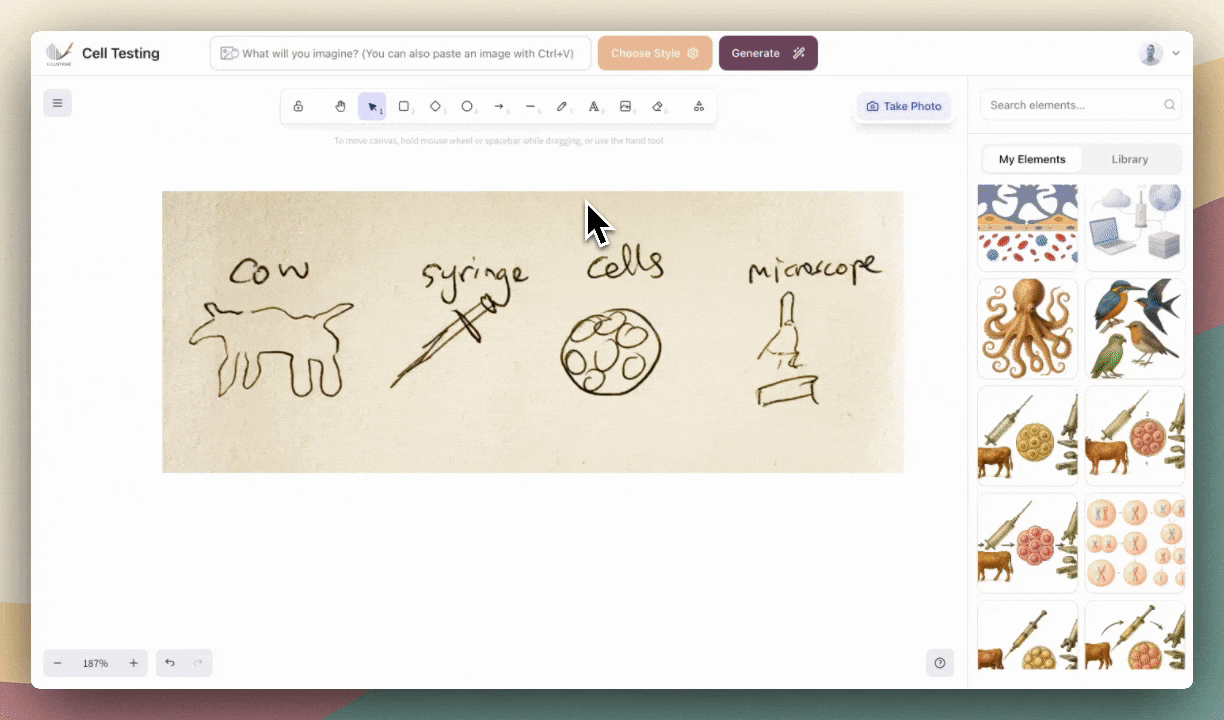AI is transforming the way researchers visualize and communicate complex scientific data. With the rapid evolution of artificial intelligence, new tools are emerging that simplify the creation of scientific illustrations, making them more accessible, accurate, and visually engaging than ever before. Whether you're a biologist sketching protein structures, a chemist diagramming molecular interactions, or a physicist modeling simulations, AI-powered scientific illustration software is quickly becoming an indispensable asset in the research workflow.
7 Best AI Scientific Illustration Software Tools for Researchers in 2025
Introduction to AI in Scientific Illustration
Over the past decade, artificial intelligence has become a fundamental component of many research technologies. In the context of scientific illustration, AI is revolutionizing how researchers turn raw data into visual stories. Instead of manually drawing every line or spending hours perfecting a diagram, modern AI illustration tools can automate much of the process. They use deep learning, image recognition, and generative models to help users create publication-ready figures in minutes.
The sheer scale of AI integration across disciplines is staggering. A bibliometric analysis of research publications from 1960-2021 found that 3.1 million of the 137 million peer-reviewed research publications during the entire period were AI-related, with a surge in AI adoption across practically all research fields in recent years. This widespread adoption has driven demand for specialized tools that leverage AI to streamline and enhance scientific communication.
Today’s AI scientific illustration software is designed not just to save time, but also to ensure accuracy and reproducibility—critical factors for credible scientific communication. As we look ahead to 2025, the landscape is filled with tools catering to every niche, from molecular biology to astrophysics, and the competition is heating up.
Criteria for Selecting AI Scientific Illustration Tools
With so many AI-powered illustration platforms available, choosing the right one for your research needs can be overwhelming. To make an informed decision, it's important to evaluate each tool based on a few essential criteria. Here are the main factors to consider:
- Accuracy and Scientific Integrity: The software should produce illustrations that are not just visually appealing, but also scientifically accurate. Look for tools that have been validated in peer-reviewed research or are trusted by leading institutions.
- AI Capabilities: Not all AI is created equal. Some platforms use advanced deep learning models to automate figure creation, while others offer basic template-based automation. Consider what level of AI assistance you need—do you want full generative capabilities, or just smart suggestions?
- Customization and Flexibility: Can you edit, annotate, and adjust the output to fit your publication or presentation requirements? The best tools offer robust customization, supporting a range of scientific styles and disciplines.
- Data Security and Privacy: If you're working with unpublished or sensitive data, the platform should offer secure upload and storage options, and comply with institutional data policies.
- User Interface and Learning Curve: Researchers are busy, and time spent learning new software is time taken from experiments or writing. The ideal tool should be intuitive and easy to use, with clear tutorials and responsive support.
- Integration with Other Tools: Does it connect with reference managers, lab notebooks, or data analysis software? Seamless integration can dramatically speed up your workflow.
- Pricing and Licensing: Finally, consider whether the tool fits your budget—especially if you’re a student or work in a resource-limited lab. Some platforms offer free academic licenses, while others require subscriptions or one-time payments.
Taking the time to evaluate these factors will help you select an AI scientific illustration tool that not only meets your current research needs, but also grows with you as your projects evolve.
Top 7 AI Scientific Illustration Software Tools for 2025
Let’s dive into the seven best AI-powered scientific illustration tools set to dominate the research world in 2025. Each tool brings something unique to the table, whether it’s seamless data integration, next-level AI automation, or unmatched artistic control. Here’s an overview of the top contenders:
-
Illustrae
Illustrae stands out as a leading platform for researchers who want both power and simplicity. Built from the ground up for scientific professionals, it leverages state-of-the-art AI to automate the generation of complex figures from raw datasets, including microscopy images, molecular models, and statistical plots. Users can turn data into high-impact visuals with just a few clicks, and the platform supports deep customization for journals and conferences.
What really sets Illustrae apart is its focus on scientific accuracy and reproducibility. Figures are generated based on standard scientific conventions, and all edits are tracked for transparency. With seamless integration into lab notebooks and data analysis pipelines, it’s a favorite for collaborative research groups. For more details, you can check out https://illustrae.co.
-
BioRender AI
BioRender has long been a popular choice for life scientists, and its new AI-driven features are taking it to the next level. The platform now offers AI-powered figure suggestions, automatic diagram generation from text descriptions, and an expanded icon library that covers everything from cell biology to ecology. Its drag-and-drop interface remains one of the easiest to use, making it ideal for busy labs and students alike.
With built-in compliance for common journal guidelines and easy export to PowerPoint or PDF, BioRender AI is perfect for creating professional figures for grants, posters, and publications.
-
Mind the Graph
Mind the Graph’s AI tools help researchers quickly assemble engaging infographics and scientific posters. The software offers ready-made templates for a variety of disciplines, and its AI can suggest layouts, icons, and color schemes based on your subject area. It’s designed for maximum accessibility, so even users with minimal design experience can produce publication-quality visuals.
Its collaborative features and affordable academic pricing make it a top pick for educational settings and multi-author projects.
-
Figdraw
Specializing in data-driven illustrations, Figdraw uses AI to interpret raw data and automatically generate figures that highlight key trends and anomalies. It’s particularly popular in fields like genomics and bioinformatics, where large, complex datasets are the norm. With Figdraw, users can go from dataset to finished figure in record time, thanks to its smart annotation and labeling features.
Figdraw also supports direct integration with R and Python, making it a great choice for computational researchers who want to visualize results without leaving their coding environment.
-
SmartFigures AI
SmartFigures AI offers a unique approach by combining automated figure generation with deep learning-based image enhancement. It can clean up microscopy images, enhance clarity, and convert rough sketches into polished, high-resolution figures. Its real-time feedback lets users fine-tune illustrations to match journal standards or specific research needs.
The platform is especially valued by researchers in medical imaging and neuroscience, where figure clarity and accuracy are paramount.
-
Scivis AI
Scivis AI focuses on interdisciplinary research, offering tools to visualize everything from molecular structures to astronomical phenomena. Its AI modules automatically recognize data types and recommend optimal visualization styles, making it ideal for labs that work across multiple scientific domains. The software supports both 2D and 3D illustration, and enables easy sharing of interactive models.
Scivis AI’s flexible licensing and cloud-based platform make it accessible to both academic and industry users worldwide.
-
DrawBot Science
DrawBot Science harnesses generative AI to turn written descriptions into accurate, detailed scientific figures. Simply describe your experiment or concept, and the AI drafts a visual representation—ready for further customization. This tool is particularly useful for brainstorming sessions, grant proposals, and early-stage project planning.
With a quick learning curve and responsive support, DrawBot Science is set to become a favorite for fast-paced research environments.
Each of these platforms offers a unique set of features tailored to different scientific disciplines and research workflows. Whether you prioritize automation, customization, or interdisciplinary support, there’s an AI illustration tool for every researcher in 2025.
Comparative Analysis of Features and Pricing
Choosing the right AI scientific illustration software often comes down to a balance of features and cost. Here’s a quick comparison of the top contenders:
- Illustrae: Advanced AI automation, high customization, seamless research integration. Pricing: Tiered academic and enterprise plans.
- BioRender AI: Extensive icon library, simple interface, AI-powered figure suggestions. Pricing: Subscription-based with educational discounts.
- Mind the Graph: Template-driven, AI layout suggestions, great for posters. Pricing: Affordable academic tiers and team plans.
- Figdraw: Data-driven, coding integration, smart annotations. Pricing: Pay-per-use or monthly subscriptions.
- SmartFigures AI: Image enhancement, real-time feedback. Pricing: Premium, with trial options.
- Scivis AI: 2D and 3D, interdisciplinary support, cloud-based. Pricing: Flexible licensing for institutions and individuals.
- DrawBot Science: Generative AI from descriptions, fast concept visualization. Pricing: Free basic tier, paid pro plans.
While premium tools like Illustrae and SmartFigures AI offer the most advanced features, there are plenty of budget-friendly options for students and early-career researchers. Always check for academic discounts or free trials before committing.
Future Trends in AI-Powered Scientific Illustration
The future of scientific illustration is undeniably AI-driven. As algorithms become more sophisticated, we can expect even greater automation, deeper integration with lab and data analysis tools, and improved support for 3D and interactive figures. Soon, AI may not only help create visuals, but also suggest new ways to interpret and communicate research findings, making science more accessible than ever before.
With the explosion of AI in research, the next few years will likely see even more specialized tools, better cross-platform collaboration, and a continued push toward reproducibility and transparency in scientific communication.



